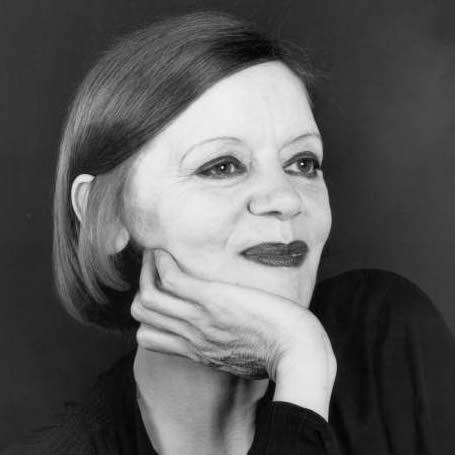Jean Muir’s garments have graced some of the world’s most famous women, including Lauren Bacall, Barbra Streisand, Judi Dench, Diana Rigg and, most notably, Joanna Lumley, her house model. Mary Quant described her as “the best” and Jean-Paul Gaultier has stated that “She has a real style you recognise and is unique… feminine but strong.” Her meticulous styling and attention to detail led to her being hailed as the “greatest dressmaker in the world”. Muir is renowned for her development of the classic and elegant fashion aesthetic, and now a year after her eponymous label closed, her full design legacy has been distilled into a concise collection of highlights.
Known for her use of Scottish material, Jean Muir was very proud of her heritage, and as such it is very fitting that her widower and former business partner, Harry Leuckert, generously donated the priceless Muir archive to National Museums Scotland in 2005. Three years on, the collection – dating from 1966 until her death in 1995 – is on display at Edinburgh’s National Museum of Scotland until March. The exhibition serves as a reminder of her unique and enduring style vision, and also as an unparalleled presentation of how a fashion company is run. Jean Muir: A Fashion Icon consists of elements of all areas of her work, such as design, manufacturing and marketing processes, showcase sketches, pattern pieces, a toile, fabric samples, and 30 complete garments and accessories.
She was part of the British design revolution during the 1960s, having started her career in fashion as a stockroom assistant at Liberty’s in 1950, and going on to design for Jaeger six years later. Muir had no formal art school training but learned her craft on the shop floor, working her way up within the fashion industry. It is this experience which instilled in her the technical expertise and strict approach she maintained throughout her career. She remained at the cutting edge of fashion for more than 40 years, moving from Jaeger to Jane and Jane in 1961, before establishing her own company, Jean Muir Ltd, five years later. She considered herself a pragmatist as well as a creative force, and her involvement in the entire design process is evident here through pattern cuttings and toiles, demonstrating her precise mathematical approach to cutting. She also insisted on trying on the clothes as she cut and altered the first pattern pieces, making sure that the garment lay perfectly and fit exactly right.
The couture look, cut and fit of her clothes is believed to be the origin of designer ready-to-wear, a fact that she claimed to be “immodest” about. Muir believed that the fit of clothes was the most important aspect of design, and that this was far more relevant to her creative role than adhering to fickle trends. In the video interview that accompanies the exhibition, she makes her distaste for the notion of fashion clear, insisting that she only recognises the term as a verb. The manufacturing process was all-encompassing for her, and she viewed herself as “engineering with cloth”. Her pieces are deceptively simple, with clean, fluid shapes that are utterly feminine. This is best displayed by the classic black halter neck dress at the entrance of the exhibition. The sensual quality of the dress belies the intricacy of its construction. It is this trait of simple restrained elegance that makes Jean Muir’s clothing timeless. She sought consistency in her innovation, and was inclined to relate her new designs to previous collections, building on her personal development rather than looking to others for inspiration. Her design philosophy was “evolutionary not revolutionary.”
The exhibition divides Muir’s finished clothing and accessories into clear fabric and colour groups, as these signature traits were fundamental in her design choices and rigid discipline. She favoured supple fabrics as she liked the clothing to be soft enough to move and flow with the body, but also firm enough to maintain the shape of the garment. Her preferred materials were matte jersey, knitwear, suede, leather, and wool crêpe. She favoured wools and knitwear especially, as they are extremely versatile, whilst taking colour well when dyed. This exhibition helps to dispell the belief that Muir did not like working with colour. Whilst she certainly preferred working in black and navy as they were eminently more wearable, she was also a great colourist. She sought for perfect shades and tones tirelessly, affording this aspect of her work the same perfectionism evident in her design form. Her exemplary print pieces and Australian Bicentennial collection (inspired by the Great Barrier Reef) are also showcased, proving that Muir was capable of creating sophisticated and effortless grace out of even the most difficult of materials and busy of patterns. Her penchant for witty details, such as hand-painted pansy and cow buttons, is also referenced, giving a rare insight into her sense of humour, and her love of all aspects of craftsmanship.
Jean Muir: A Fashion Icon encapsulates the essence of the designer. Attention is drawn to her fabric and manufacturing methods, rather than the chronology and momentum of her career. For a woman who was concerned wholly with the quality and construction of her work, this exhibition’s focus successfully maintains a loyalty to Muir’s personal craft and design priorities.
Jean Muir: A Fashion Icon is in the Special Exhibitions gallery, Level 3 of National Museum of Scotland until 15 March 2009.
